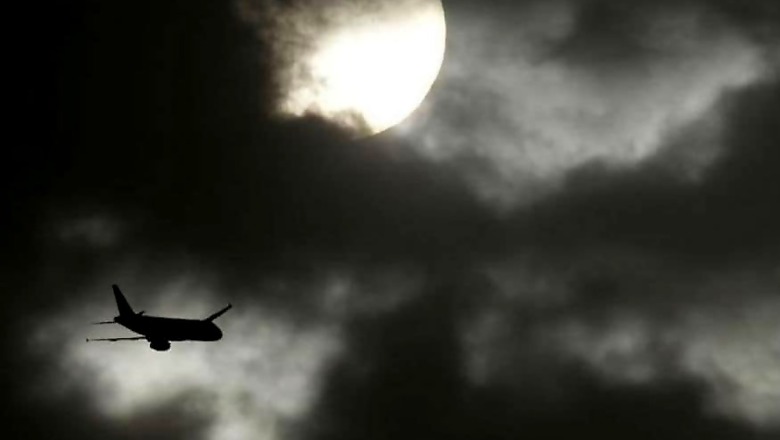
views
New Delhi: Behind the Indian aviation boom lies a crumbling structure. People who fuel the industry are stretched to their limits despite the multiple safety layers. The warning beeps have been on for some time, but in the hurry to grow, they have been ignored.
The three main pillars of aviation that are directly responsible for you flying safely have been compromised. The Air Traffic Controllers are stretched and understaffed, and the pilots pushed to the brink because of an expanding industry.
Industry watchdog DGCA battles staff shortage and lack of skilled officers who truly understand aviation. It is headed by a bureaucrat who usually has only a couple of years at such a crucial position.
Let’s first focus on the Air Traffic Controllers or the ATCs, the people responsible for guiding the aircraft safely till you get to your port. Delhi alone with its glitzy Terminal 3 needs 600 officers; today they have just 360.
A senior officer at the Airports Authority disagrees. “This requirement for Delhi is after our transition to our new automation system and new building.” Those manning the radars feel otherwise. “After a long shift, we could manage a clear day off. This has now been given a go-by because of shortage of manpower and training in new IATS. Now at least 50 percent of the controllers are made to do duties on their off days. Where is the planning?”
The scary scenario is that they are sometimes made to work on more than one airspace. It’s like playing a video game with double speed, double attacks, hence, double stress. One controller should not handle more than 15 planes, but in Delhi and Mumbai they handle around 30. This is not funny.
A senior air traffic official maintains that there are enough officers in Delhi, but admits that there is a shortage in Mumbai. The statistics by the DGCA itself should have got the warning bells ringing — between 2011 and May 2016, they found that 71 of the 129 potential collisions were because of ATC glitches. Airports Authority officials admit that the increase in movements has been alarming and growth is beyond what the current infrastructure can take.
Over the next 14 years, India will need 40,000 air traffic controllers to handle flights, according to the International Civil Aviation Organisation. That’s about 3,000 officers every year. This year alone, 600 ATCs were recruited, trained and put on duty, and 400 more have been interviewed. By 2020, they plan to hire 700 more officers.
“In case of an incident, the ATC officer is derostered pending enquiry, which takes a minimum of six months because of the lackadaisical approach of the DGCA,” says a senior officer at the Airports Authority of India. A source at DGCA says most cases are disposed of in two months and only those that are complex need six months. More numbers show how dismal the ground condition is — between 2012 and 2015 when a lakh and a half flight departures were added, not a single ATC officer was recruited.
There is much dependence on automation these days. Former director general of Civil Aviation says, “Humans become too complacent depending on automation. The fatigue impacts their decision making skills. Pilots need to be alert always.”
A pilot who does not want to be named feels: "I dont think the crunch is affecting the performance. There is so much automation today that it is manageable. As airlines expand, the aviation sector expands, and India has all the bench strength to meet the requirement, be it AME, pilots, cabin crew, ATC personnel or ground staff. But it does get tiring to fly so much. Even on my reserve days I get pulled out to work. The fatigue does accumulate as one needs to concentrate and be alert while flying." A fatigued pilot and one that is well-rested is what stands between safety and disaster. The margin is very small.”
At a time when training and recruiting pilots should be a priority, DGCA is busy solving HR issues between airlines and pilots. The recent Civil Aviation Requirement (CAR) issued by aviation regulator DGCA proposed strict action against pilots for reporting late for duty as well as falsely claiming to be sick despite being rostered. This was opposed by a large section of the pilots who felt they were being targeted because of a few rotten apples. It had also heeded to request from some airlines and sent a recommendation for 'considering' increasing the notice period to nine months or a year. This was struck down by the aviation ministry. “All these developments coupled with the corruption within the DGCA and red tape has a lot of angry pilots flying,” says a senior commander with a full-service airline.
Shakti Lumba, former Indian Airlines pilot with 28 years of experience in aviation, said in a recent interview to The Business Standard: “This directorate started taking control and instead of being a facilitator of pilots, it became a controller of pilots. Now the directorate exerts control on every aspect of a pilots training and flying career. They are like a “super director of operations” for pilots of all airlines. They interfere in every airline.”
Pilots are being overworked. A recent surveillance found 63 pilots of SpiceJet had operated flights exceeding flight duty period — a worry considering some of the major aviation disasters have been due to sleepy pilots.
There have been numerous incidents and the media is guilty of sensationalising some of them. Every incident reported is not catastrophic or life threatening. There are enough safeguards, multiple safety layers or firewalls are built in for safety. However, when the system is pushed against the wall these safety channels are bound to fail. As the sector heads for rapid growth all around development is a must — growth does not mean adding more aircraft, the infrastructure and manpower that supports these airlines must grow simultaneously.



















Comments
0 comment